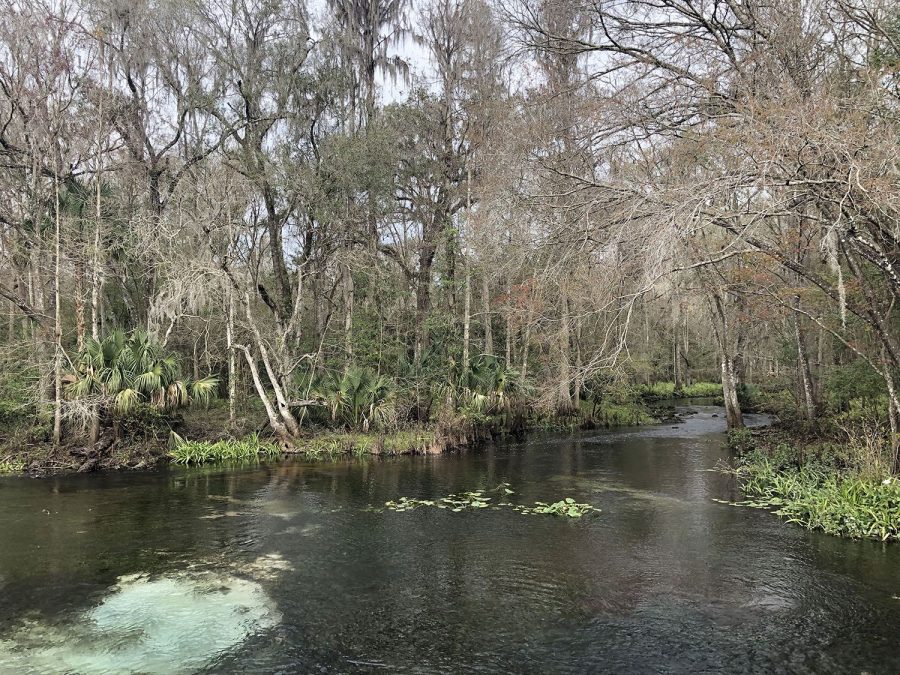Field trip gives students ecological awareness
AP Environmental Science students take a field trip to Crystal Springs Preserve Jan. 16 as a part of the curriculum on ecological health. This was the seventh annual trip for teacher Margaret Drumsta.
On a 45-degree, mid-January morning, the prospect of wading in a river and spending all day outdoors braving the elements is not exactly tempting.
Nonetheless, I, as well as more than 100 fellow AP Environmental Science students, allowed ourselves to be ushered onto buses and carted 45 minutes away on the promise that we would be given a rewarding grade in return.
At the all-too-early hour of 7:30 a.m., our class, headed by teacher Margaret Drumsta, embarked to Crystal Springs Reserve. We enjoyed a day of getting close, like waist deep in river water close, to nature and applying what we had learned during first semester.
When we arrived, all three buses emptied, and we immediately began cursing the non-Florida-like temperatures in charming teenager fashion of whining and complaining with the necessary melodrama of a soap opera audition.
Our kind and wonderfully personable guides weathered the storm well, and although they could not bring out the sun, they did succeed in engaging us with our scenic environment.
My group was the first to encounter the river plunge, where we would stand in the current to fish with nets for marine life.
We were not discreet about our hesitancy to go into the water, but Drumsta was even more plain that there was no other choice. The first squishy steps in were a pleasant surprise, however, as the water was a comfortable 72 degrees and nearly crystal clear.
Wielding our nets with disquieting resemblance to a cult, we caught 17 different species of fish, snails, bugs and shrimp. Many were released back into the river after observation, but some were taken back to Drumsta’s classroom, which by now could double as an aquarium exhibit.
Before our next activity we changed back into dry clothes, which takes a surprising amount of effort when one is shivering with an intensity rivaled only by those suffering from fully fledged pneumonia.
From there we went to experiment on the water we had just been in, testing levels of dissolved oxygen, nitrate and pH. The hosts at Crystal Springs made this entirely straightforward and uncomplicated, allowing us to fully understand the ecosystem’s qualities without being muddled by complex science.
We were pleased to find that the habitat was just as healthy at the chemical level as it appeared on the surface; each group’s tests revealing normal and balanced results.
After a lunch break lounging beneath trees or suspended in hammocks, our final activity was to measure the elevation of the grounds and inspect soil samples. Groups of students were given another chance to act like real scientists out in the field, using equipment and working in teams to take accurate measurements and discuss observations.
These activities were educational in a way that did not dilute our interest, as they were taught in conjunction with hands-on participation that made the concepts digestible and stimulating.
The trip highlighted how our education back in the classroom is applicable to learning more about the health status of our ecosystem and all the components of human activity that can affect it. Getting our hands dirty with river water and soil translated our time in school into potential outdoor careers.
The group was entirely worn out by the time we returned to the school, but I think each student now has a much better appreciation of the role environmental science plays in real world attempts to monitor and maintain our fragile ecosystem.

